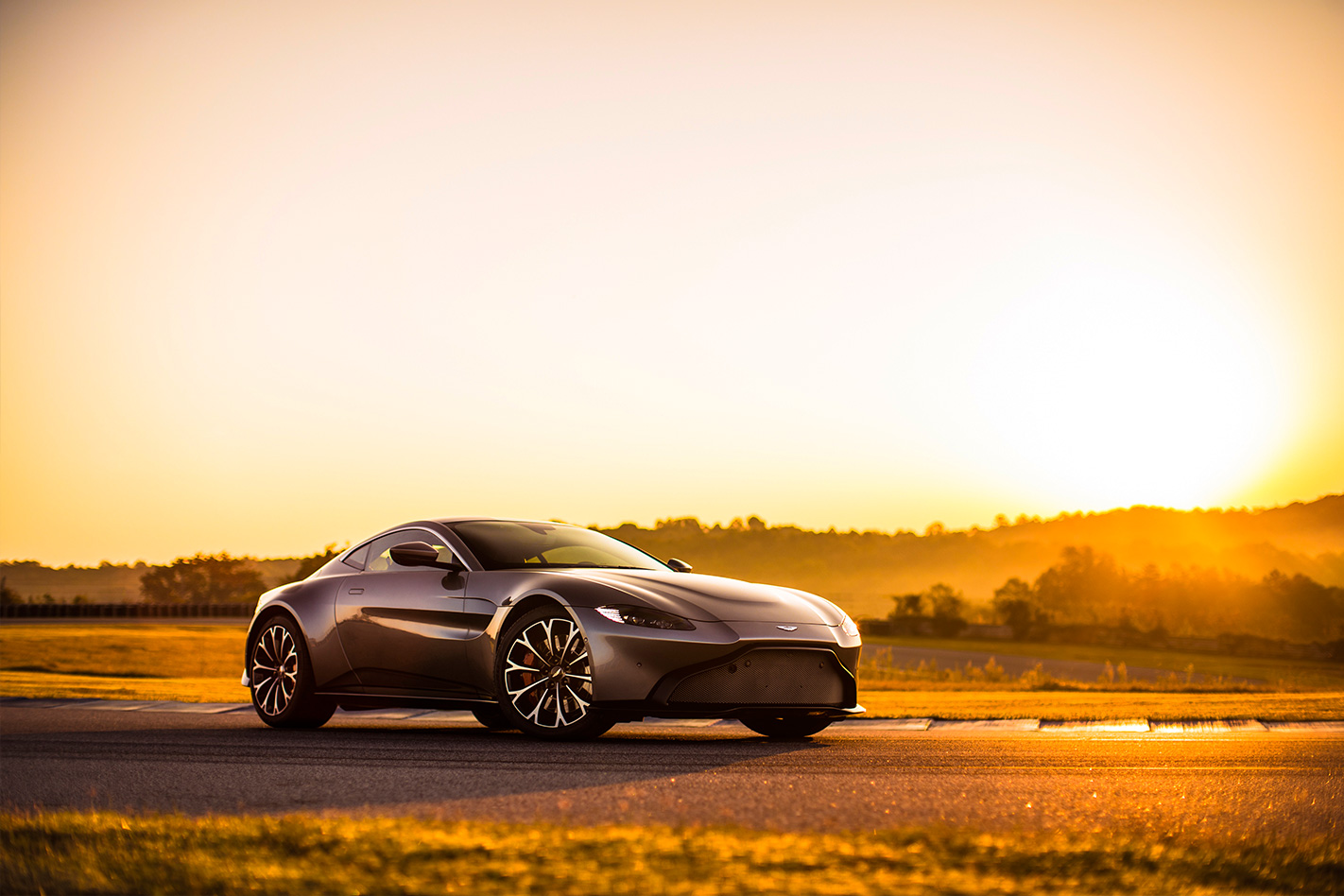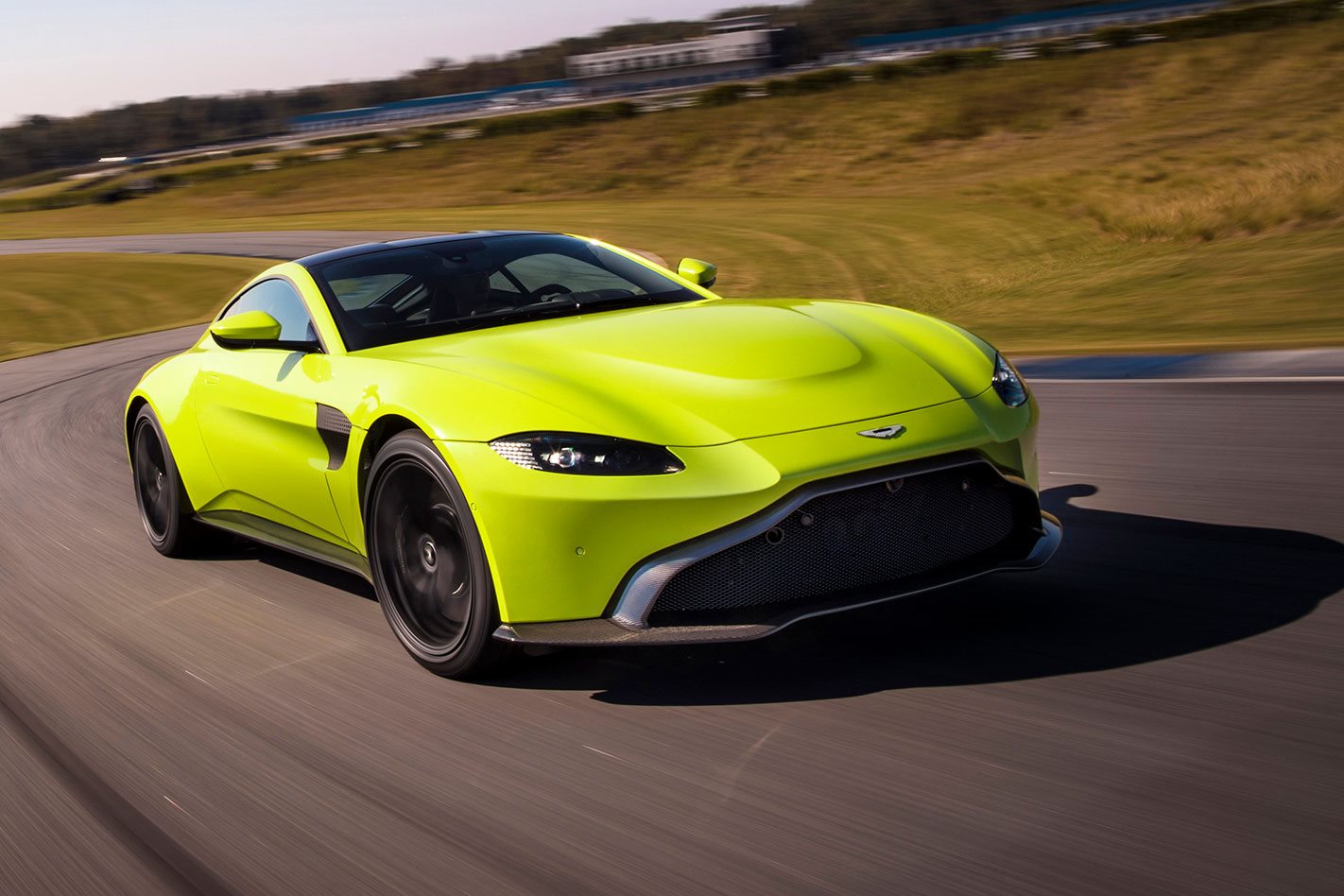AFTER months of hype, speculation and teasers, Aston Martin has finally revealed its next-generation Vantage sportscar.
It has revealed a two-door coupe that redefines the entry point for the British high-performance brand and must continue to build momentum for the company.
With a hand-built Mercedes-AMG 4.0-litre V8 under its clamshell bonnet, the radically restyled Vantage comes to the competitive high-end sportscar market packing a 375kW punch thanks to twin turbos and a tune unique to Aston.

Power usurps the outgoing V8 Vantage, which produced 321kW from a naturally aspirated 4.7-litre V8, and although the 5.9-litre V12 version pumped out up to 444kW in AMR tune, the new version is faster than both.
Vital statistics look like this: Zero to 100km/h in 3.6 seconds and a V-max of 314km/h.
But the new arrival assumes a greater mantle than simple performance figures and Aston Martin predicts the new-gen Vantage to contribute to its continued global growth.

“We see some significant growth just focusing on our existing owner base I guess we would expect volumes similar to what we’ve been achieving, but with our focus now broadening to a large number of volume competitors, we see significant volume increase for the brand overall with this car,” he said.
With 20 percent of the 2018 allocation already spoken for, Australian sales are already looking healthy, despite a price tag that will eclipse the outgoing V8 Vantage by about $80,000. Exact pricing is yet to be finalised but a figure “circa $300,000” should be expected, said Wall.
But that’s unlikely to deter well-heeled Aston fans who have already set their heart on the new model, which brings a significant evolution in styling and cues from both the unhinged Vulcan track-star and even the manic Valkyrie.

“Three years ago Aston Martin was selling about 350 to 360 cars in Asia-Pacific,” said Wall. “Next year, our target will be over 800. It is the right time and with the increased volume comes increased budgets.”
Wall would not reveal how many vehicles the company believed it could sell with the arrival of the new Vantage, which joins forces with the DB11, followed by another significant shot in the arm , the DBX SUV. However, Wall did say the Vantage would outsell the DB11 and it is likely the company’s first high-rider would trump both sports cars.
For now, Vantage customers are being offered a two-seat rear-drive coupe with credentials that appear to stack up well against its contenders in the high-end sports segment, with the prospects of more potent versions on the cards.

The adoption of a transaxle and front mid-mounted engine has resulted in a 50:50 front-to-rear weight distribution for the ultimate in handling and balance, according to Aston.
Unlike the AMG, which has a dry-sump lubrication system for the lowest engine positioning, the Aston uses a slimline wet sump.
Traction is optimised with an electronically controlled differential, while torque vectoring and 20-inch wheels are standard. Customers with a little cash to splash can upgrade to lighter forged versions of the same diameter in a number of different designs.

Most exterior aerodynamic components are crafted in carbonfibre for strength and minimised weight, helping to contribute to an overall dry weight of 1530kg.
Handling braking are six-piston calipers and 400mm discs on the front axle, and four-pot calipers with 360mm rotors at the rear. No mention has yet been made of an optional carbon ceramic set. The Pirelli P Zero tyres measure 255/40 on the front and 295/35 at the rear.
Forged double wishbones form the front suspension with a multilink set up at the rear, supplemented by adaptive damping.

Inside, there are more clues to the AMG connection with an information and entertainment system dial and 8.0-inch screen lifted straight from the German car’s cabin, as well as other switchgear. But interior styling including the Alcantara-clad seats are a more dramatic departure.
The company will also offer a bespoke customisation service to make the Vantage more personal while distancing it from the related AMG.







